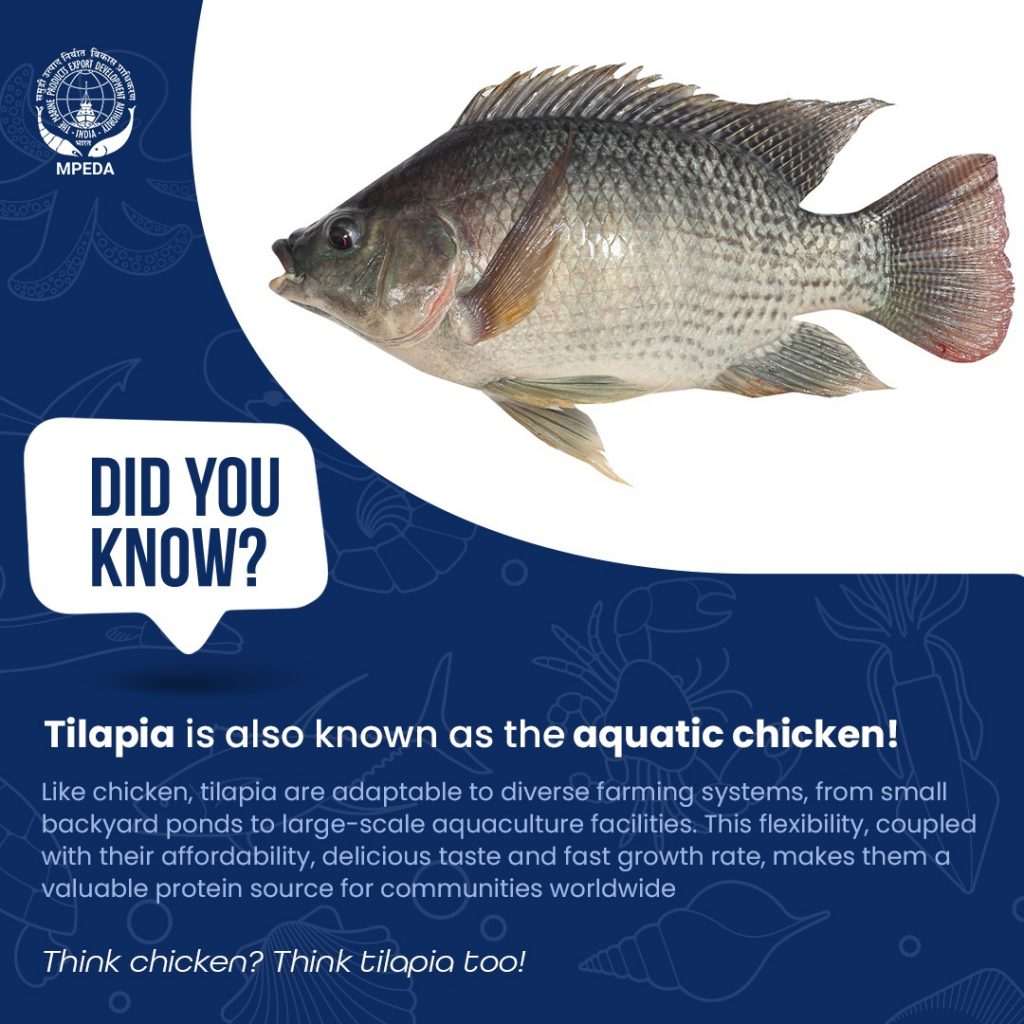Did you know that tilapia is often called the “aquatic chicken”? This popular nickname is more than just a catchy phrase—it highlights the many reasons why tilapia has become one of the most widely consumed and farmed fish worldwide. Like chicken, tilapia is an affordable, versatile, and reliable protein source that meets the dietary needs of millions of people globally. Let’s explore why tilapia has earned this fitting comparison and how it has become a vital part of the aquaculture industry.
Versatility: Tilapia Thrives in a Variety of Environments
One of the most remarkable traits of tilapia, and a key reason it is likened to chicken, is its ability to thrive in diverse farming systems. Whether it’s a small backyard pond or a large-scale aquaculture facility, tilapia can be raised efficiently and sustainably in a range of environments. This flexibility makes tilapia farming accessible to communities across the world, particularly in regions with limited resources or challenging climates.
Tilapia’s adaptability extends beyond just the water conditions. They can be farmed in both freshwater and brackish water, making them a resilient option for many farmers. This ability to adapt to various environments is one of the reasons why tilapia is so widely farmed and why it’s an ideal protein source for many developing countries, where food security is a concern.
Affordability: A Low-Cost Protein Source
Just as chicken is often the go-to affordable meat option for families, tilapia serves as an inexpensive source of high-quality protein. Because they grow quickly and reproduce efficiently, tilapia is relatively inexpensive to farm compared to other fish species. The lower production costs translate to lower prices for consumers, making tilapia an accessible protein source for people of all income levels.
In many parts of the world, tilapia has become an essential part of the diet, providing an affordable option for those who might otherwise struggle to access more expensive protein sources like beef or seafood. The affordability of tilapia, coupled with its nutritious value, has made it a staple in kitchens from Asia to Africa to the Americas.
Nutritional Benefits: A Healthy Choice
Tilapia is not only affordable but also a nutritious powerhouse, offering a wide range of health benefits. It is a lean source of protein, low in fat, and rich in essential nutrients such as omega-3 fatty acids, vitamins, and minerals. This combination makes tilapia an excellent choice for those looking to maintain a healthy diet without sacrificing flavor.
Like chicken, tilapia is versatile in the kitchen, allowing it to be prepared in countless ways. Whether it’s grilled, baked, fried, or included in soups and stews, tilapia easily takes on flavors from spices, marinades, and sauces. Its mild taste and tender texture make it an appealing choice for people of all ages and culinary preferences.
Sustainability: Farming Tilapia for a Greener Future
One of the most compelling reasons for tilapia’s growing popularity is its potential as a sustainable seafood option. Tilapia farming is often considered environmentally friendly because these fish have a low feed conversion ratio (FCR). This means that tilapia requires less feed to grow, making them more efficient and less resource-intensive to farm compared to other fish species.
Additionally, tilapia can be farmed in closed systems, reducing the impact on natural ecosystems and minimizing pollution. In many cases, tilapia farming uses water recycling systems that limit waste and make the process even more eco-friendly. This aligns with the global shift toward sustainable aquaculture practices, ensuring that tilapia can continue to be farmed without depleting natural resources.
As the demand for seafood rises and the sustainability of wild fish stocks becomes a pressing issue, tilapia is positioned as a smart alternative for meeting the growing global protein demand. Its low environmental footprint and high yield make it an attractive option for farmers and consumers alike who are conscious of their environmental impact.
Tilapia’s Global Impact: Feeding the World
Tilapia’s reputation as the “aquatic chicken” is well-deserved, especially considering the role it plays in feeding communities worldwide. Like chicken, tilapia has become a dietary staple in many countries, thanks to its affordability, availability, and nutritional value. In regions where food security is a concern, tilapia has been a crucial tool in fighting malnutrition by providing families with a reliable source of protein.
With production spanning across continents, tilapia farming has created livelihoods for countless farmers and aquaculture workers, supporting economic development and ensuring a steady supply of food in both rural and urban areas. As tilapia production continues to rise, its role in global food security will only become more important.
Think Chicken? Think Tilapia Too!
Tilapia’s rise to fame as the “aquatic chicken” is a reflection of its unique characteristics that mirror those of poultry—versatility, affordability, sustainability, and nutritional value. Whether you’re looking for an environmentally friendly seafood option or a low-cost, healthy protein source, tilapia is a perfect choice that caters to a wide range of needs.
So, next time you’re thinking about adding a nutritious, versatile, and affordable protein to your meal, think beyond the land and consider tilapia, the “chicken” of the sea!
#Tilapia #Aquaculture #Sustainability #MPEDA #Seafood #IndianSeafood #ProteinSource

